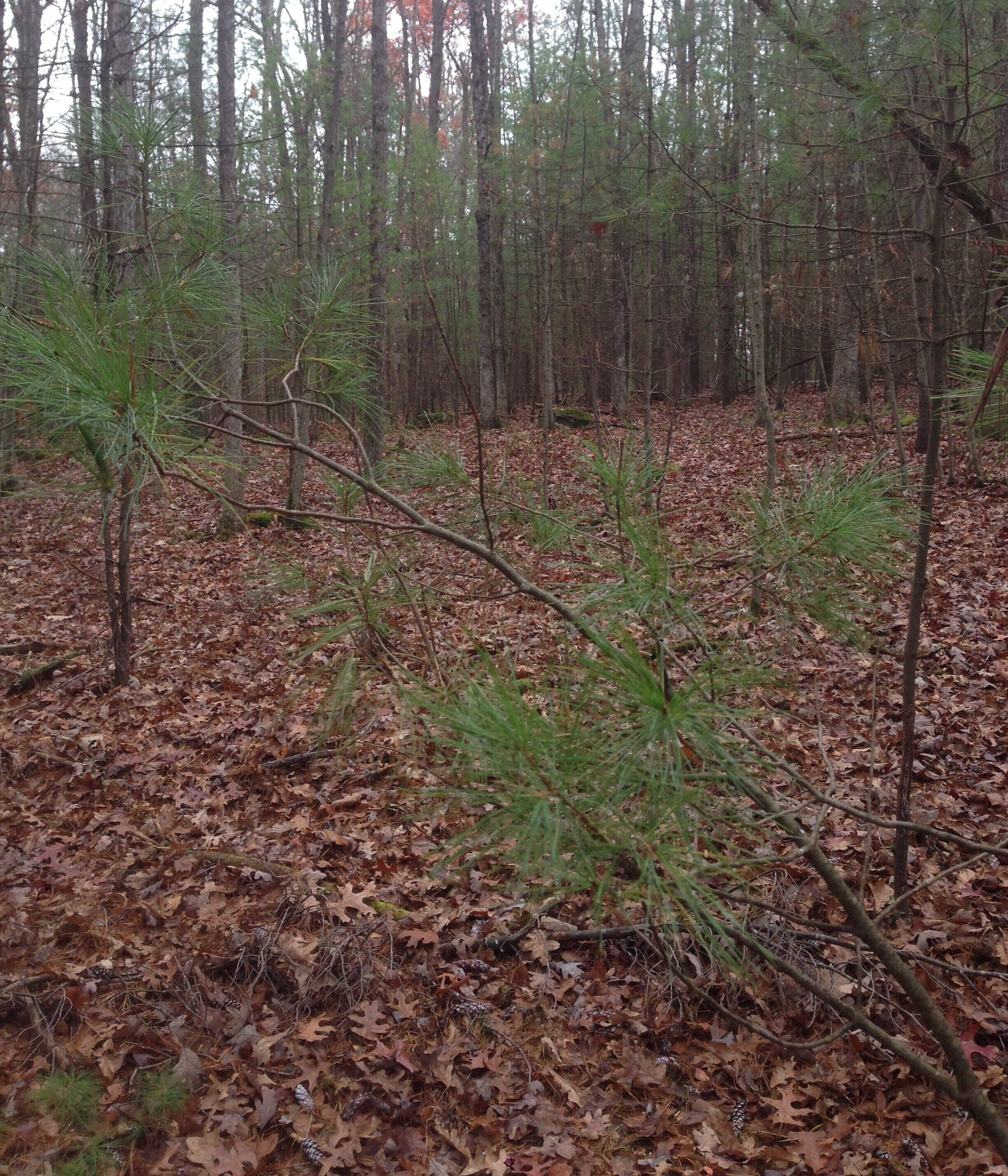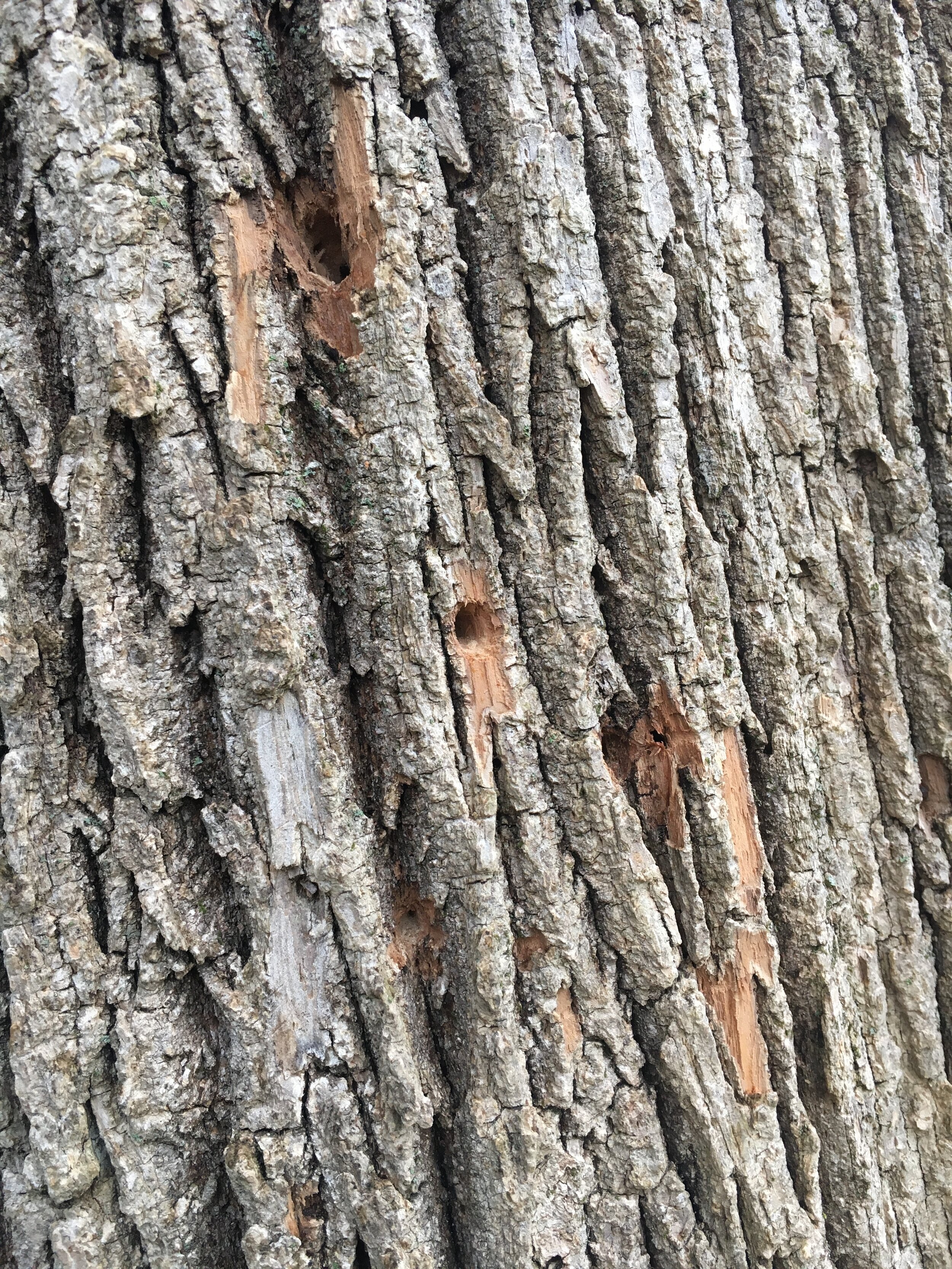Why Forest Management?
It can seem like forests manage just fine on their own. Sometimes, that “preservation” approach is worthwhile. But sometimes, intervening can help accelerate a forest’s ability to meet a particular need: producing building materials, providing habitat, keeping water clean, being a nice place to spend time.
There’s space to match up our individual and societal goals with what nature “wants” or is able to do. Most of the following items are not mutually exclusive. We can plan management activities to optimize certain goals, but it’s usually possible to find a solution that’s good for people, trees, animals, water, and the rest of the environment.
What can we accomplish with forest management?
Management Can Push Forests Towards What We Want
Forests change.
Trees grow and produce seeds, and trees die and fall to the ground. An abandoned hayfield grows goldenrod, then brambles, then sumac, then pine trees. Succession is this process of change, where the types of trees and their sizes progress to a new state. Change isn’t necessarily bad! We can acknowledge that forests are changing, and intervene to steer succession in a direction we want. We can favor certain sizes or species of trees, or, more likely, work to promote a mix of trees good for timber, and trees good for wildlife, in a variety of species.
Management Can Make Up For Past Mistakes
We can make sure there’s age class diversity, or forests of all ages.
Lots of the woods around here were fields a hundred years ago, which were abandoned by the middle of the 20th century. (Of course, they were most likely woods 500 years ago). Given 80 or 100 years of succession, most fields will turn into 80- or 100-year-old forests. These “middle-aged” woods are good for many things. But for animals who like very old forests, or very open land, or young forests with lots of little saplings, or a mix of tall trees and open space, the “standard” 100-year-old forest isn’t the most hospitable.
If we can create a patchwork of diverse forest types and ages, we can ensure the right habitat is in place for most creatures, and we can ensure a diverse portfolio of forest resources for human needs.
We can address prior high-grading, to improve the potential of forestland to produce timber and old/big trees.
Pick your metaphor: the payday loan of forest management, shooting the winning racehorse, cut-the-best-and-keep-the-rest. Up until the ‘80s at least, it was common for people to cut all the big valuable trees in a stand, making sure to “leave smaller trees to fill in the space”. This might work for fish in a pond, but not for most trees. When trees compete, the losers tend to be unhealthy, crooked, and more susceptible to disease. There are some creative silvicultural ways to address high-grading.
We can control invasive species to ensure the next generation of trees can grow, or to allow space for other plants that are more useful to us and wildlife.
If your forest floor is covered in barberry, you’re not going to get many young trees to grow. Even if you do everything else right. If you thin a forest with invasives in the understory, the invasives will take advantage of the new addition of light. Bittersweet, multiflora rose, autumn olive, barberry, buckthorn, and stiltgrass are tenacious plants brought by people who didn’t know any better. We can’t get rid of them, but we can manage them.
We can manage for the new reality of pests and diseases.
The emerald ash borer and woolly adelgid are here, so the normal rules don’t always apply. Prior generations mismanaged their shipping logistics and plant quarantines, and now most of our ash and hemlocks are going to die. We can’t stop this in a widespread way, but we can manage our woods with this fact in mind. If you’ve got invasives under a stand of ash, now is the time to manage them. If you have hemlocks along a trout stream, it’s worth underplanting with another evergreen to keep the water shaded and cool once the hemlocks start to go. It’s fine to keep some big, nice trees around in case they end up being resistant. But don’t bet the farm on ash sawtimber in the year 2035.
Management Can Help Prepare for the Future
We can enhance a forest’s climate resilience.
It’s getting hotter and wetter: temperatures are rising, and precipitation patterns are changing: more precipitation overall, mostly concentrated in winter. So spring floods and summer droughts are both going to get larger and more common. This can affect what kinds of tree seedlings survive. A big part of climate change is that things will be less predictable. This makes it even more important to establish healthy and diverse forests, so that when one gets hit by The Next Big Disease or Hurricane, others are less susceptible.
We can enhance forest health.
Trees compete by slowly stressing each other out until some of them die. At certain stages of forest development, all trees are under competition stress. If we judiciously choose who the winners and losers are/will be, we can release the winners from competition stress, which makes them more resilient to winds, pests, and diseases. We’re growing bigger, healthier trees faster, by thinning.
We can practice silviculture for sustained yields.
Will we be able to harvest timber in 3 years, 10 years, and 30 years? 100 years? This means measuring how fast the forest is growing, diversifying age classes and types, and planning for regeneration harvests at the appropriate time.
We can enhance certain habitats, to allow for animals with particular needs.
Silviculture with Birds in Mind is a specific approach to creating different forest types for songbirds. Standing dead trees, vegetation at varying heights, the number and size of certain trees, and other factors affect what kinds of wildlife will use a certain patch of woods. Much of that is within our control!
We can plan for financial shocks.
When there’s a death in the family, huge medical bills, or other unexpected costs, it can be very tempting to liquidate the value in a forest. It’s usually better to be prepared, so you don’t have to high-grade in a panic. It’s worth having a basic inventory and harvest schedule that you can adjust, rather than creating all that in a stressful time.
We can prepare for changing timber market conditions.
Trees grow more slowly than markets change. If you build a robust portfolio of high-quality trees, you’re more able to take advantage of changing prices.
Management Can Make Forests A Nicer Place to Spend Time
We can add, enhance, or preserve trails, destinations, vistas, unique features.
It’s so important to be able to spend time in the woods, and all of these recreational elements can match nicely with other goals.
Management Can Make Some Money
You can sell specific, predetermined trees to a logger, who will cut them and pay you a certain price per volume.
It’s not the only reason for owning forest, but well-managed woods can be a financial asset. We can plan the timber sale so that the harvest accomplishes our other goals of thinning, regeneration, shifting species composition, and creating habitat.














